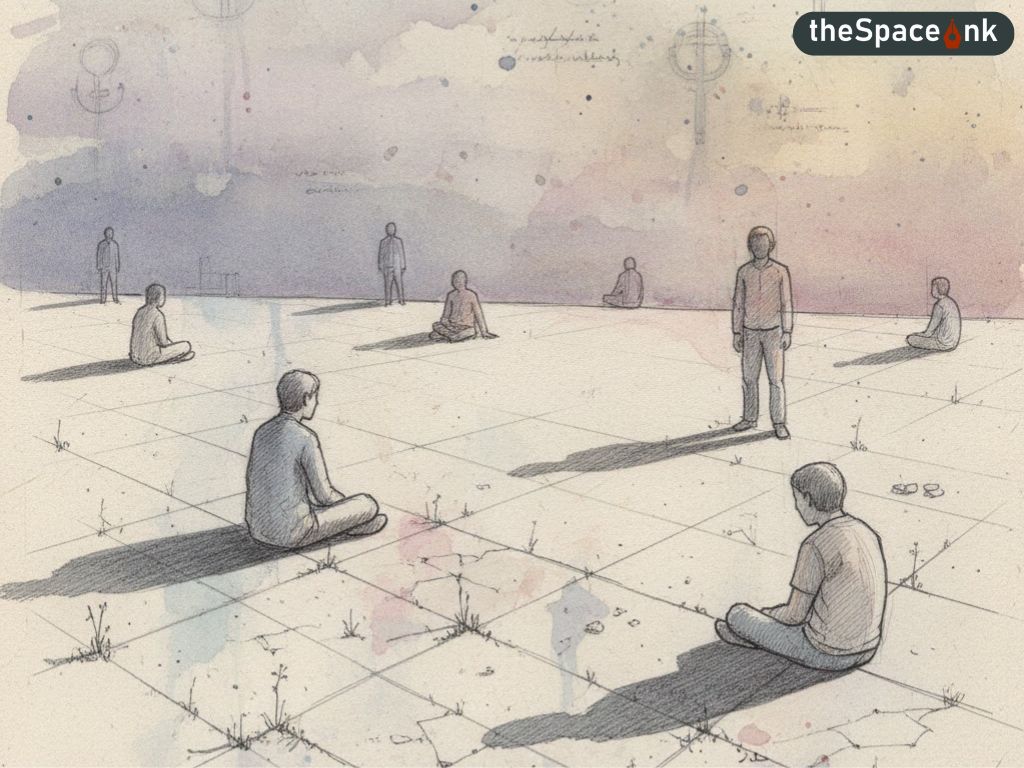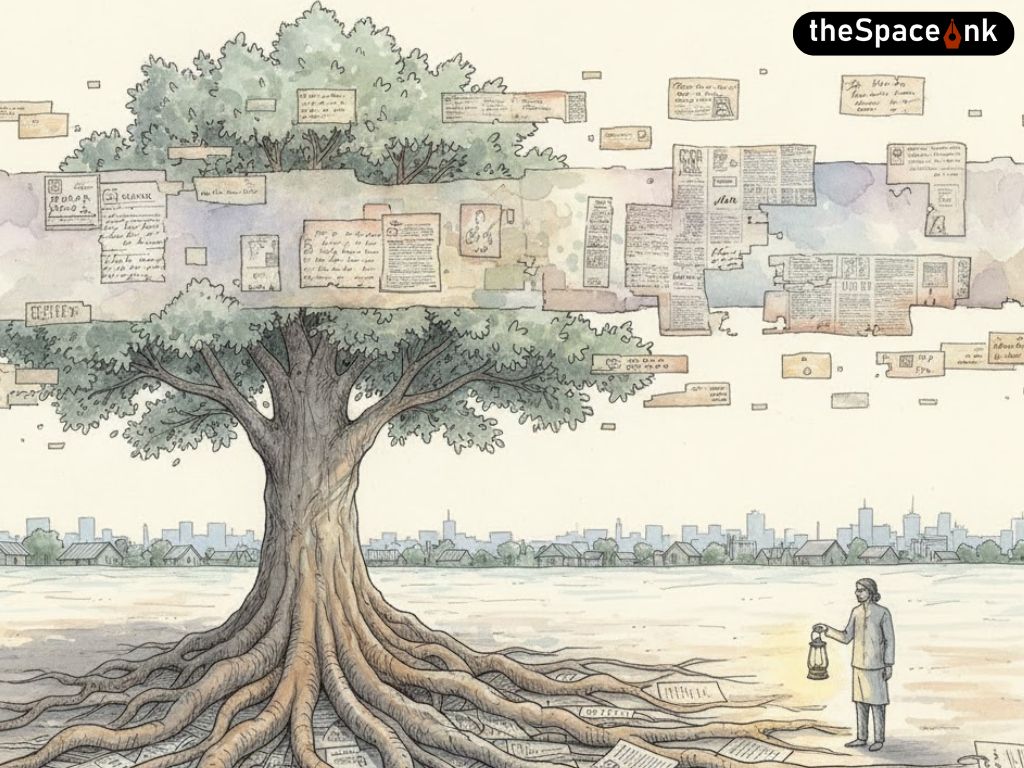The first evolution of consciousness to save the world and the “Blue Economy” is recorded in Rig Veda. When a demon, named Hiranyaksha dragged the earth to the bottom of the sea the Varaha (Sanskrit for “Boar”) slew the demon and raised the earth out of the water. Varaha is the third of the ten incarnations of the Hindu god Vishnu. The god who preserves the cosmic order.

The ancient concept of Dashavataras has been interpreted to be reflective of Darwinian theory of evolution. It describes the cycle of human evolution beginning in water as Matsya (Sanskrit for fish). The other incarnations namely Koorma, Varaha, Narsimha, Vamana, Parasuram, Ram, Krishna and Buddha follow. The last stage of evolution is supposed to be Kalki, the avatar who will destroy greed, hatred, intolerance to achieve a self-indulgent being at the cost of ecology and environment. In short, it is about sustainability and development achieved through evolution of consciousness towards protection of the global environment. Therein lies the essence of the Blue Economy as a subset of the green economy.

The Blue Economy is different from the ocean economy. The Rio +20 summit in June 2012, stated “the green economy is in fact blue“. The ocean economy is known for its resources and wealth that empower the economic system of oceans. This includes energy arising from waves and tidal waves, the marine life, oil, gas and minerals from rocks. The ocean covers three quarters of the Earth’s surface and represents 99 percent of the living space of the planet by volume. This contains nearly 200,000 identified species, but the actual number may lie in millions. It absorbs about 30 percent of the carbon dioxide produced by humans and produces 50 percent life giving oxygen.

However, there is constant erosion of coastlines, shifts in tectonic plates resulting in tsunami waves and the seabed is being used as a waste dump generating noxious elements that annihilate marine life and endangers climate change. Since the beginning of the industrial revolution there has been a 26 percent rise in ocean acidification, aggravated by marine pollution, of which an overwhelming majority comes from land-based sources.
Over three billion people depend on marine and coastal biodiversity for their livelihoods. India has 7516 Km of coastline. Nine out of the country’s twenty-nine states are coastal and the nation’s geography includes 1382 islands.
This largely resembles the episode of the “Samudra Manthan” narrated in ‘Bhagavata Purana’. Lord Vishnu had advised the gods to form an alliance with the demons and churn the ocean for the nectar of immortality. The churning of the ocean was a difficult task. Mount Mandra was used as a churning rod and the snake Vasuki became the churning rope. The lethal poison known as Halahala escaped the mouth of the serpent king and all were terrified as the poison could destroy all of creations. While Vishnu in the form of Koorma (turtle) supported the mountain on its shell to prevent it from sinking, the demons were poisoned by fumes emitted by Vasuki, the snake. Shiva consumed the poison to protect the world. As a result of which his throat “turned blue”.

Analogously, the positive effects of economic development, reduction in inequity, and protection of marine life which yielded positive effects for the global economy also generated the negative elements: destruction of marine and coral life, oil spills, dumping of poisonous waste on the ocean floor (an average of 13000 pieces of plastic litter can be found on every square kilometre of the ocean). Just like the Samudra Manthan episode the virtue of circular economy is harmed by global warming through climate change. So, if we want to enjoy the Amrita (the nectar) of life, we must ensure that the self-destructing nature of human avarice does not destroy the environment.

The SDG (Sustainable Development Goal) 14 is about life below water. How we can manage vital resources is essential for humanity as a whole. To counterbalance climate change we must drive global systems that make the earth habitable for humankind. The temperature, chemistry, currents and life all together will help global systems, ecology and environment for a habitable world.
Over three billion people depend on marine and coastal biodiversity for their livelihoods. India has 7516 Km of coastline. Nine out of the country’s twenty-nine states are coastal and the nation’s geography includes 1382 islands. There are 199 ports including 12 major ports that handle 1400 million tonnes of cargo each year. India’s exclusive economic zone of 2 million square kilometres has a bounty of living and non-living resources with resources like crude oil and natural gas. The coastal economy sustains over 4 million fishing and coastal communities. This makes the blue economy occupy a vital position in India’s economic growth.
To counterbalance climate change we must drive global systems that make the earth habitable for humankind. The temperature, chemistry, currents and life all together will help global systems, ecology and environment for a habitable world.
Several countries have undertaken initiatives to harness their blue economy: Australia, Brazil, UK, USA, Russia, Norway have dedicated national ocean policies. Canada and Australia had made laws. All these are in response to a universal call to take actions to end poverty, protect the planet and to ensure that people worldwide enjoy peace and prosperity by 2030.
The blue economy is a term created by Gunter Pauli when he wrote the book ‘’The Blue Economy:10 Years, 100 innovations, 100 million’’. The world bank defines it as sustainable use of ocean resources for economic growth, improved livelihoods and jobs while preserving the health of the ocean ecosystem. The stress is on renewable energy for socio economic development; fisheries that contribute $270 Billion to global GDP. In maritime transport more than 80 percent of traded goods will double by 2030. Marine tourism draws 41 million visitors per year to coastal and small island states. Waste management of 80 percent litter from land-based resources go into the oceans accelerating climate change. Oceans are an important carbon sink. In India the emphasis on waste management and climate change is far lower than on the issue of national security.
The seven thematic areas for the preservation of Blue Economy are:
1.National accounting framework for Blue Economy.
2.Coastal Marine Spatial planning and tourism (data mapping)
3.Marine fisheries, Aquaculture and fish processing
4.Manufacturing, emerging industries, trade, technology, services and skill development.
5. Logistics, Infrastructure and shipping including trans-shipment
6. Costal deep-sea mining and offshore energy
7. Security, strategic dimension and international engagement.

The sea connects us and the stress naturally is on Sagar Mala; Coastal economic zone; SDGs; Sagar; foreign policy; and Indian Ocean Rim Association (IORA). Millions of the poorest of people depend on the ocean and the coastal resources for their livelihood. The oceans act as highways for 90 percent internationally traded goods. It supplies 15 percent of humanity’s protein needs. Therefore, the sustainability of the earth; environment; species; biodiversity; economic growth and development; inter-sectoral and inter-temporal inequity can be bridged through the green economy; blue economy; ocean economy and the orange economy-that is the creative economy which encompasses the wealth of talent, intellectual property, cultural heritage and connectivity amongst all regions. In short, it is about all for one and one for all.
Image courtesy: Wikimedia Commons
Dr. Suman K. Mukerjee is an economist and highly respected academician. He has more than 46 years of teaching and research experience in India and abroad which includes institutions like XLRI, IISWBM, St. Xaviers’ College, Kolkata, IIT Delhi etc. He has also been a columnist and member of several advisory boards of the Indian Government as well as the West Bengal Government. He is an alumnus of St. Xavier’s College, Kolkata, St. Stephen’s College and Delhi School of Economics. Presently he is a member of State Advisory Board on Education, Government of West Bengal, Advisory Board, Chairman International Marketing and Business Community, Federation of Small and Medium Industries (FOSMI), West Bengal, Economics Sub Committee BCC&I, MCC&I, ASSOCHAM, CII(ER). He is also a life member & general council member of Ceners-k, an independent thinking body of researchers on International Development.







